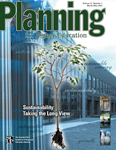- Integrated Planning
Integrated Planning
Integrated planning is a sustainable approach to planning that builds relationships, aligns the organization, and emphasizes preparedness for change.
- Topics
Topics
- Resources
Resources
Featured Formats
Popular Topics
- Events & Programs
Events & Programs
Upcoming Events
- Building Buy-in for Planning: Dealing With Resistance and Gaining Support
Online | March 11 – April 8 - Budgeting for Impact: A Working Group on Resource Planning in Higher Education
Online | Feb 5, Feb 19, March 5 - Cross-Functional Collaboration: Tools and Skills for Working Across Silos
Online | February 10, 17, 24
- Building Buy-in for Planning: Dealing With Resistance and Gaining Support
- Community
Community
The SCUP community opens a whole world of integrated planning resources, connections, and expertise.
- Integrated Planning
Integrated Planning
Integrated planning is a sustainable approach to planning that builds relationships, aligns the organization, and emphasizes preparedness for change.
- Topics
Topics
- Resources
Resources
Featured Formats
Popular Topics
- Events & Programs
Events & Programs
Upcoming Events
- Building Buy-in for Planning: Dealing With Resistance and Gaining Support
Online | March 11 – April 8 - Budgeting for Impact: A Working Group on Resource Planning in Higher Education
Online | Feb 5, Feb 19, March 5 - Cross-Functional Collaboration: Tools and Skills for Working Across Silos
Online | February 10, 17, 24
- Building Buy-in for Planning: Dealing With Resistance and Gaining Support
- Community
Community
The SCUP community opens a whole world of integrated planning resources, connections, and expertise.
 Planning for Higher Education Journal
Planning for Higher Education JournalThe Role of the Landscape in Creating a Sustainable Campus
 From Volume 31 Number 3 | March–May 2003By Carol Franklin, Teresa Durkin, Sara Pevaroff Schuh
From Volume 31 Number 3 | March–May 2003By Carol Franklin, Teresa Durkin, Sara Pevaroff Schuh
Institutions referenced in this resource:
University of North Carolina at Chapel HillColleges and universities are expanding at unprecedented rates, creating new hazards for our increasingly fragile natural environments. Higher education administrators and planners are finding that campus development, like suburban sprawl, can disrupt functioning natural systems and destroy the natural, historical, and cultural fabric of the place. To address environmental issues and new regulations, proactive institutions of higher education are taking the lead as stewards of the land by including an environmental component in their campus master plans. An environmental approach to planning incorporates ecological information into campus master plans to ensure a sustainable campus landscape that is beautiful, durable, and distinctive. These Environmental Master Plans are best developed using a democratic process, considering each site’s unique essential environmental resources, the constraints of the regulatory environment, and a continuing education and outreach program. A case study of an Environmental Master Plan at the University of North Carolina at Chapel Hill illustrates how such a plan was created at one of the nation’s oldest and largest college campuses.
MEMBERS ONLY
Attention Members: Log in to access this item.Not a member? Join now to access this article and all journal articles for free. - Topics
- Topics


